The North Dakota Oil Pipeline: Derogation of Native American Tribal Land Rights
Photographic Evidence

A proposed oil pipeline is set to begin construction on tribal lands in North Dakota. Members of various Native American reservations gathered Monday to try to stop it.
Last week, the federal government gave final approval to the construction of the Dakota Access Pipeline, which will run for 1,172 miles to transport crude oil from North Dakota’s Bakken oilfields to Patoka, Illinois.
Hundreds of protesters, primarily Lakota and Dakota from Native American reservations within a several-hundred-mile radius, convened over the weekend at the edge of the Standing Rock reservation in North Dakota to voice their anger.
The pipeline would travel through lands sacred to the Lakota people, and cross under the Missouri, Mississippi, and Big Sioux rivers.
A possible spill, which can occur with pipelines, would mean contaminating farmland and drinking water for millions.
After a series of tense interactions with North Dakota state police on Monday, the protesters succeeded in temporarily halting the beginning stages of construction.
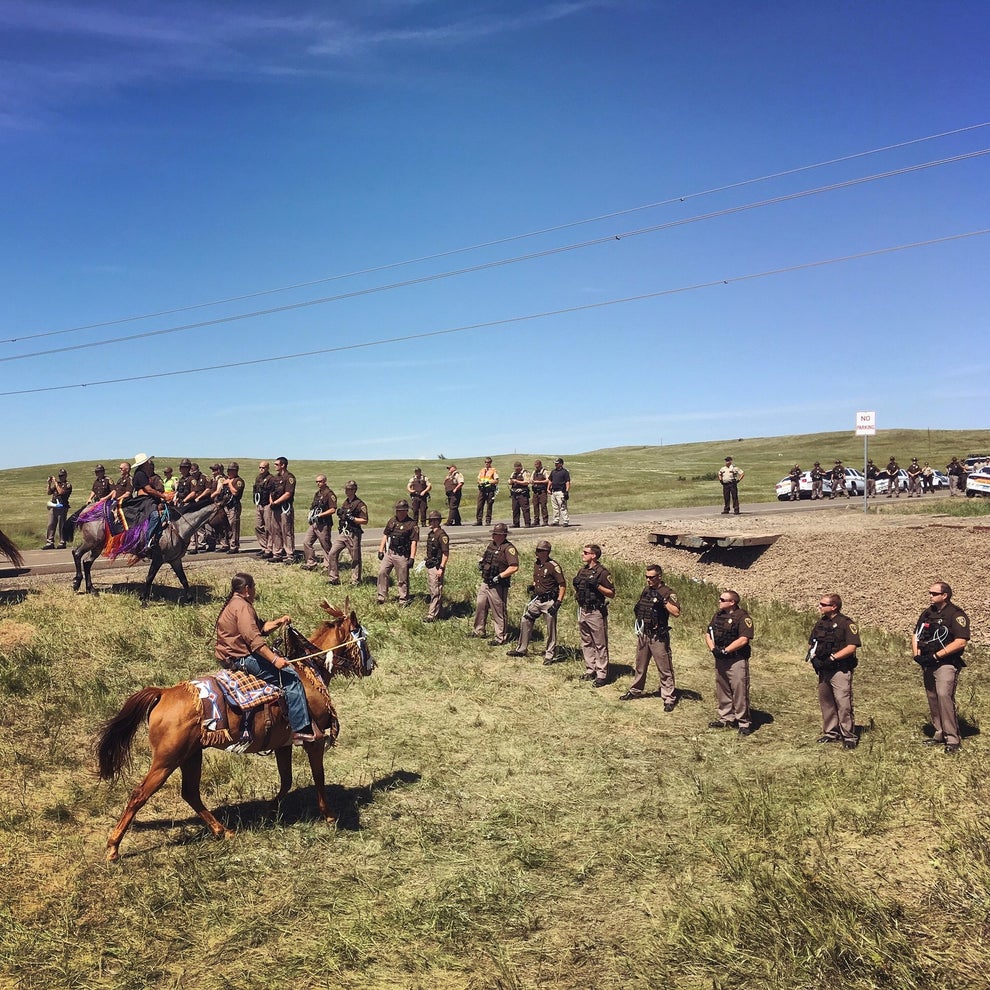
Riders from the Standing Rock, Rosebud, and Lower Brule Lakota reservations came together on horseback to push back a police line that had formed between a group of protesters and the entrance to the Dakota Access Pipeline construction site. Daniella Zalcman
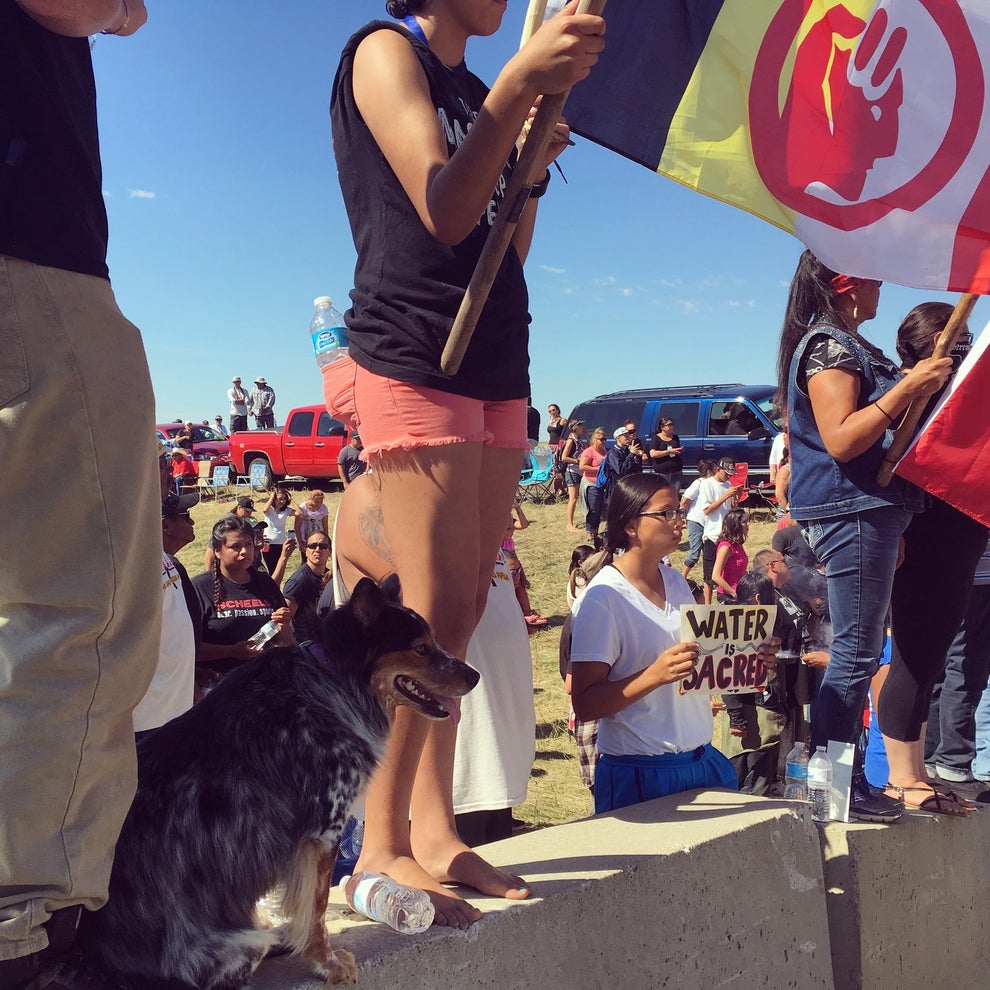
Protesters stand at the front barricades of the protest zone, holding signs that read “Water is sacred” and “Mni Wiconi” (“Water is life” in Lakota). Daniella Zalcman
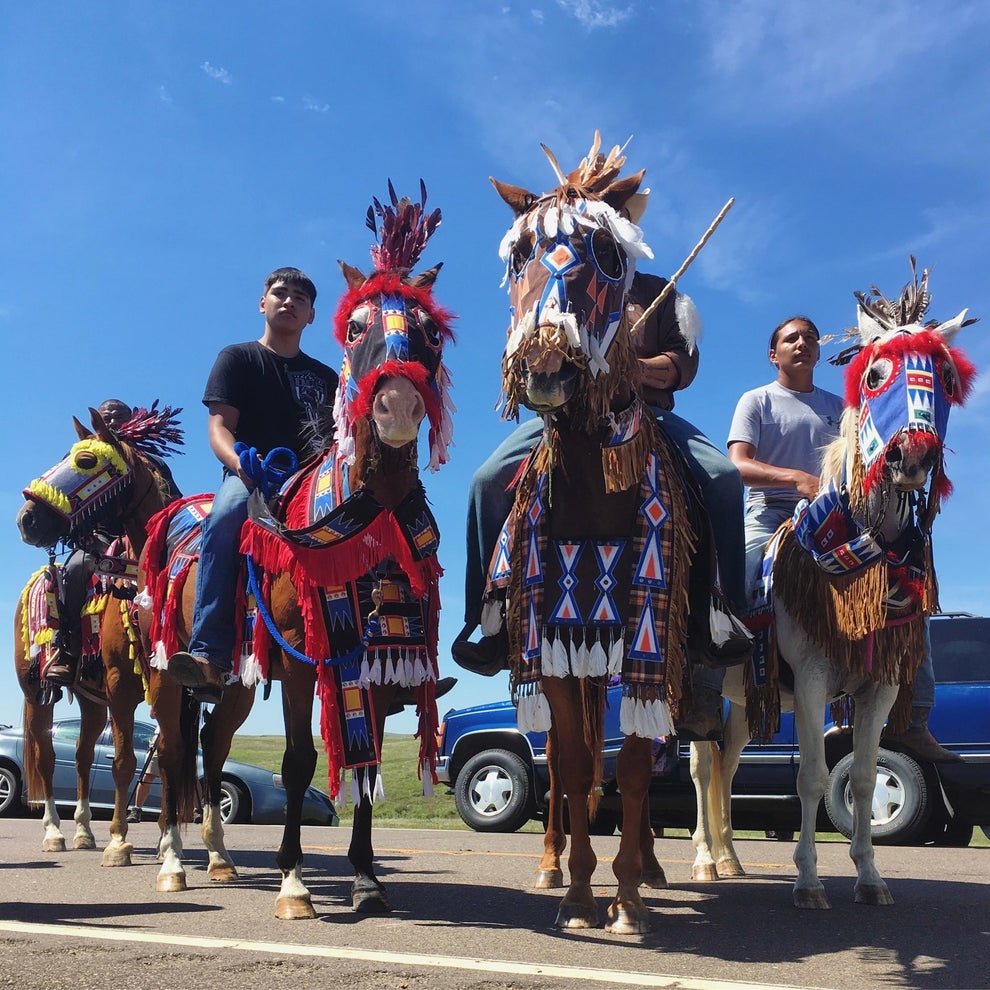
Horses and riders from the Rosebud reservation arrive to support the Standing Rock community. The horses are in traditional Lakota regalia. Daniella Zalcman
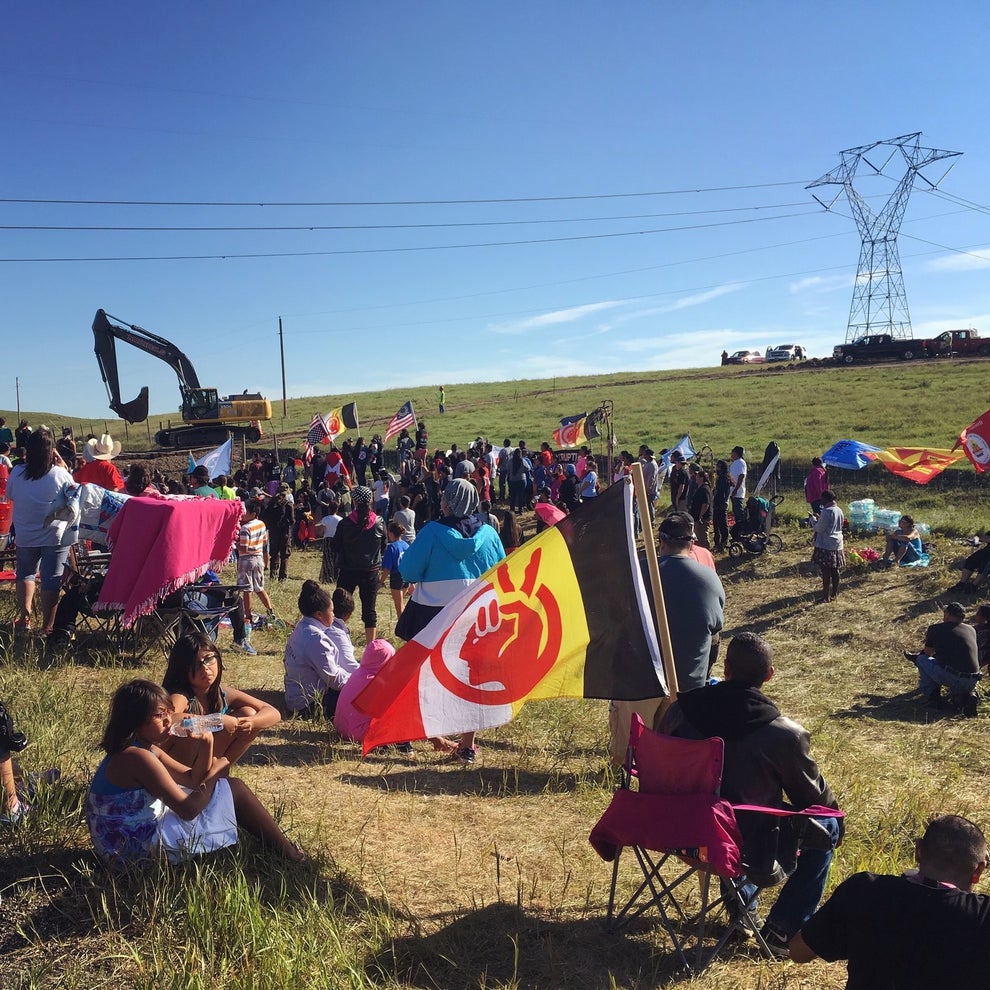
Protesters congregate next to a construction site for the Dakota Access Pipeline on Monday morning, as a crew arrives with machinery and materials to begin cutting a work road into the hillside. The flag in the foreground belongs to the American Indian Movement. Daniella Zalcman
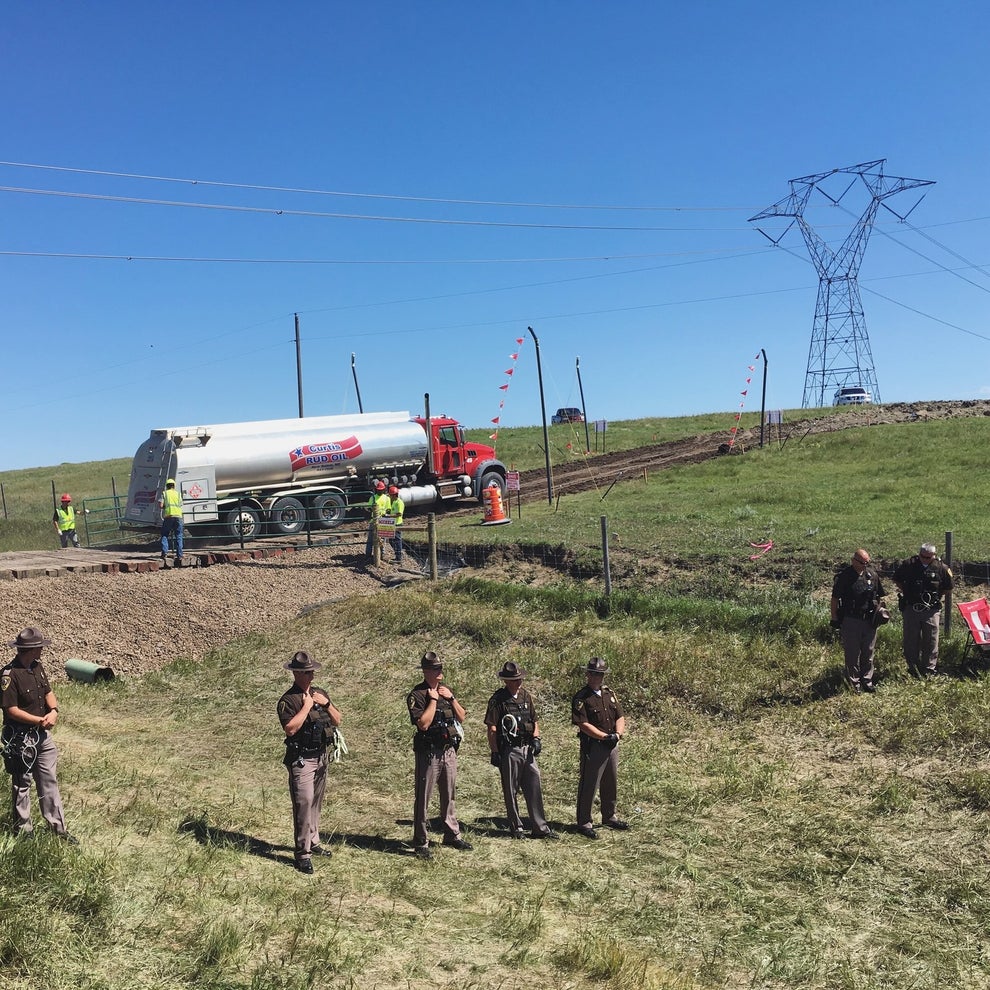
North Dakota state police form a line between the protesters and the entrance to the construction site as a tank truck turns into the property. Daniella Zalcman
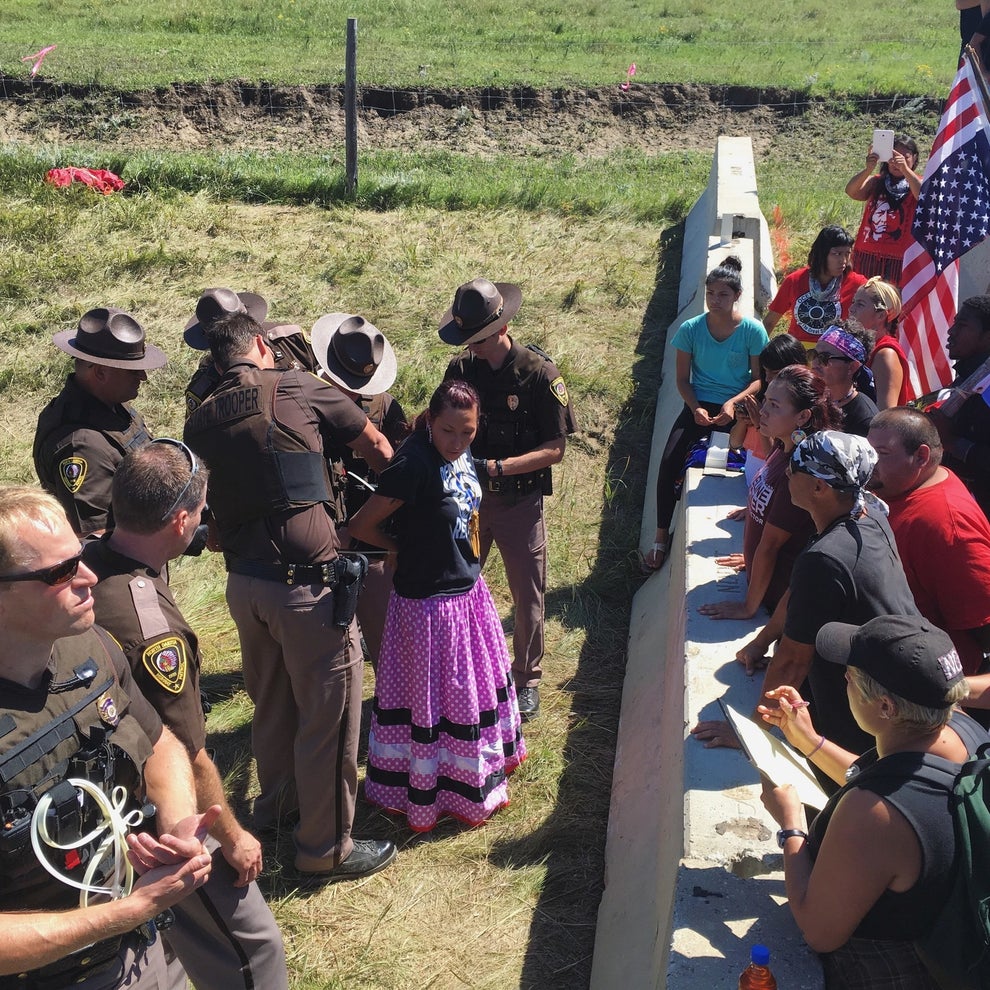
A protester is arrested for standing on the outer layer of barricades that separate the protest site from the police line and construction zone on Monday morning. Daniella Zalcman

A protester is arrested for standing on the outer layer of barricades that separate the protest site from the police line and construction zone on Monday morning. Daniella Zalcman
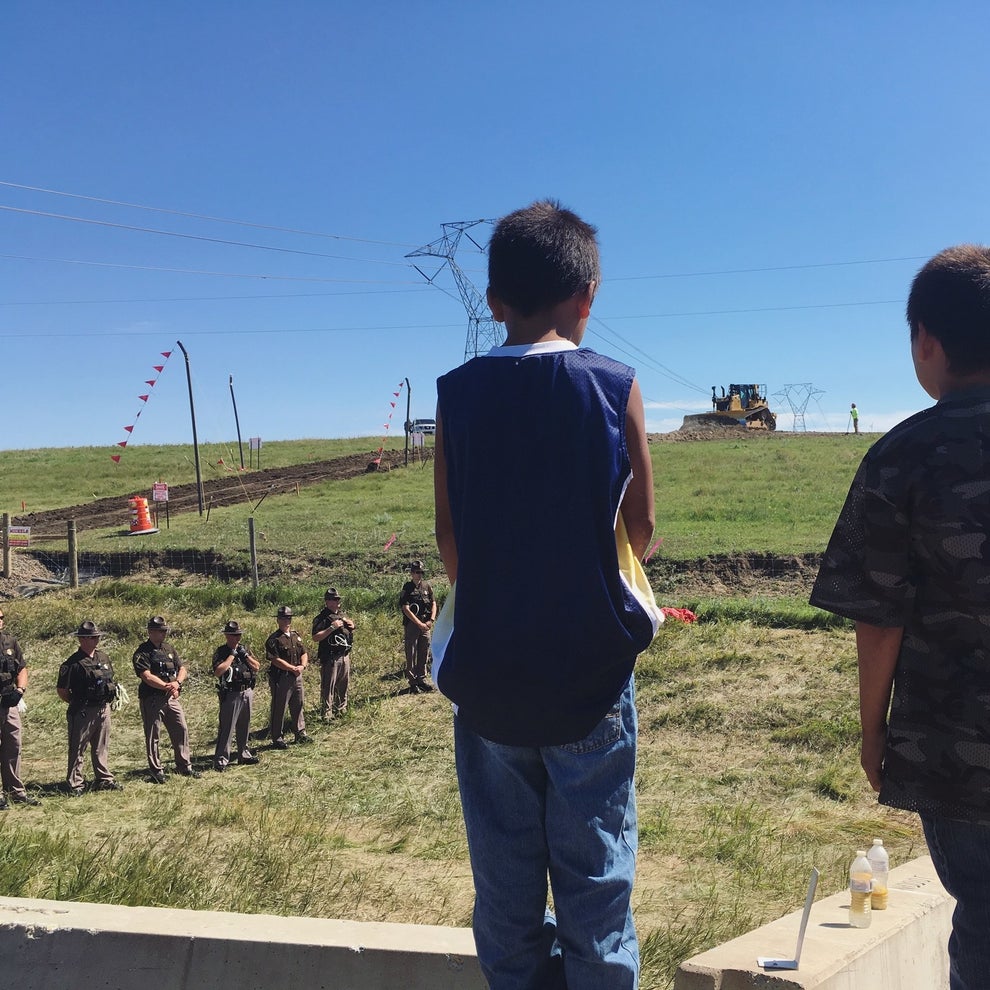
Two young Lakota boys watch as construction machinery drives onto the Dakota Access Pipeline construction site, just over a mile from the banks of the Missouri River. Daniella Zalcman
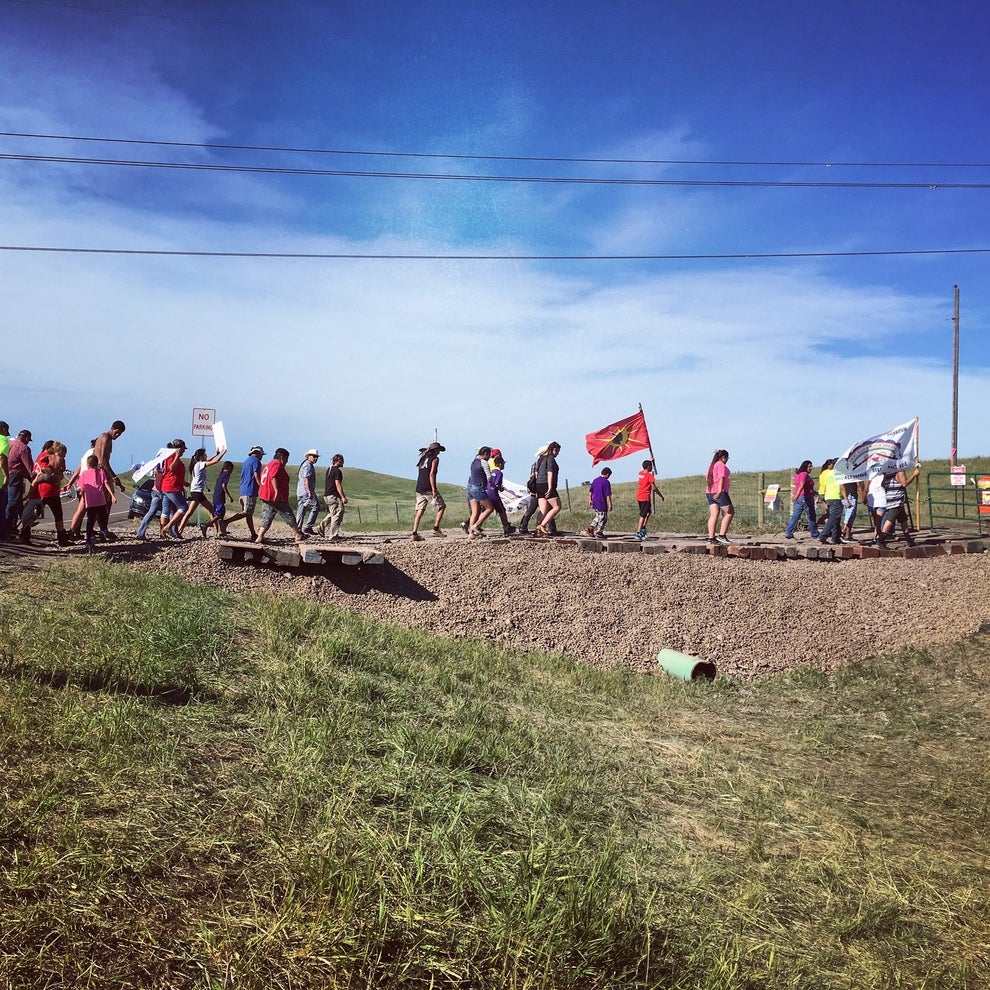
After the protesters disrupted the construction site and shut down work for the day, a group marched up to the main gates. Daniella Zalcman
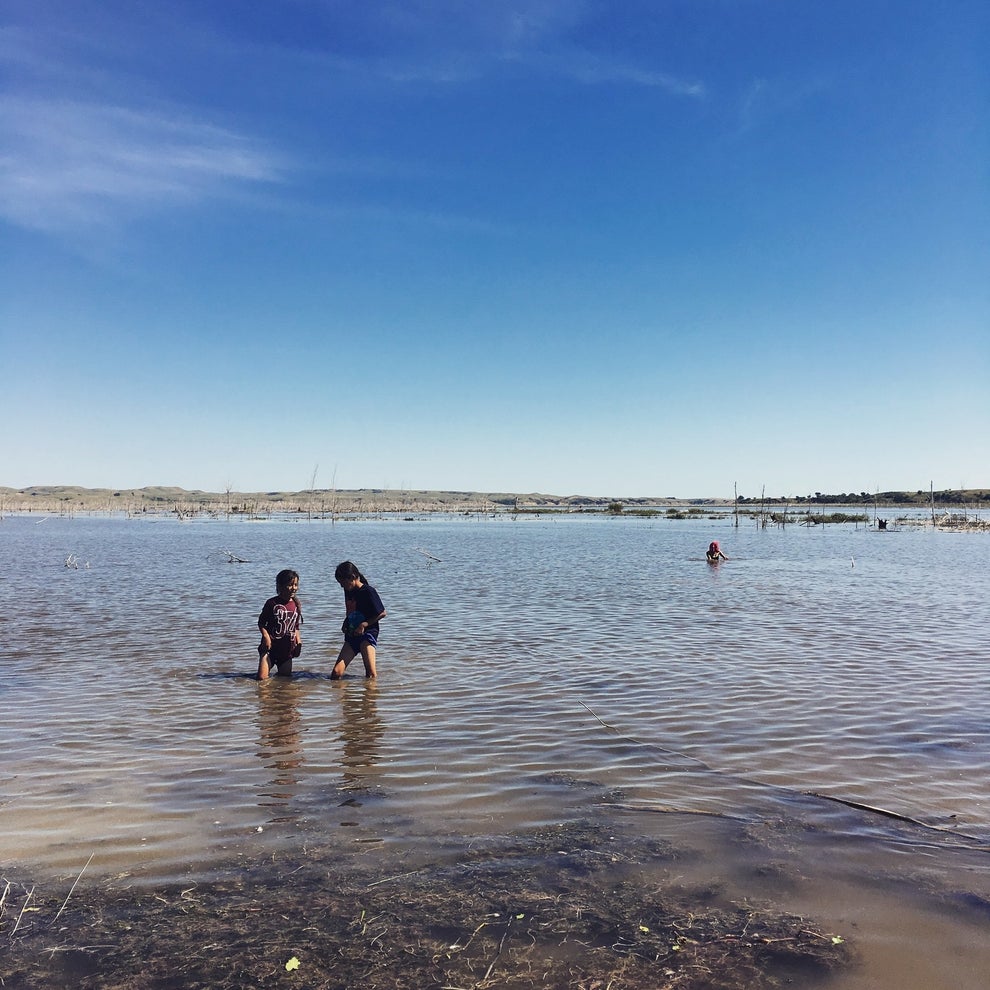
Children play in the Missouri River, a mile from the proposed construction of the Dakota Access Pipeline. Daniella Zalcman

